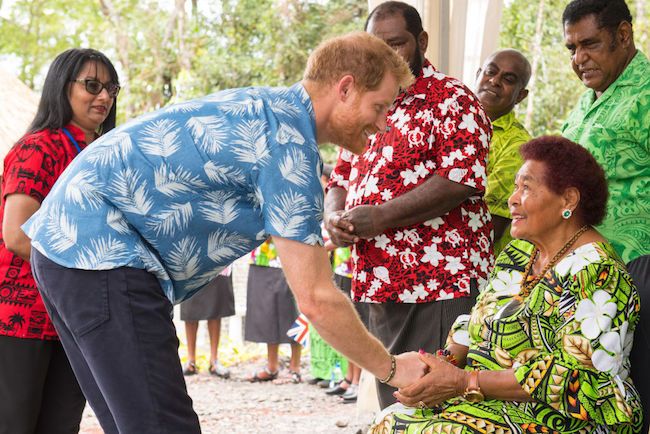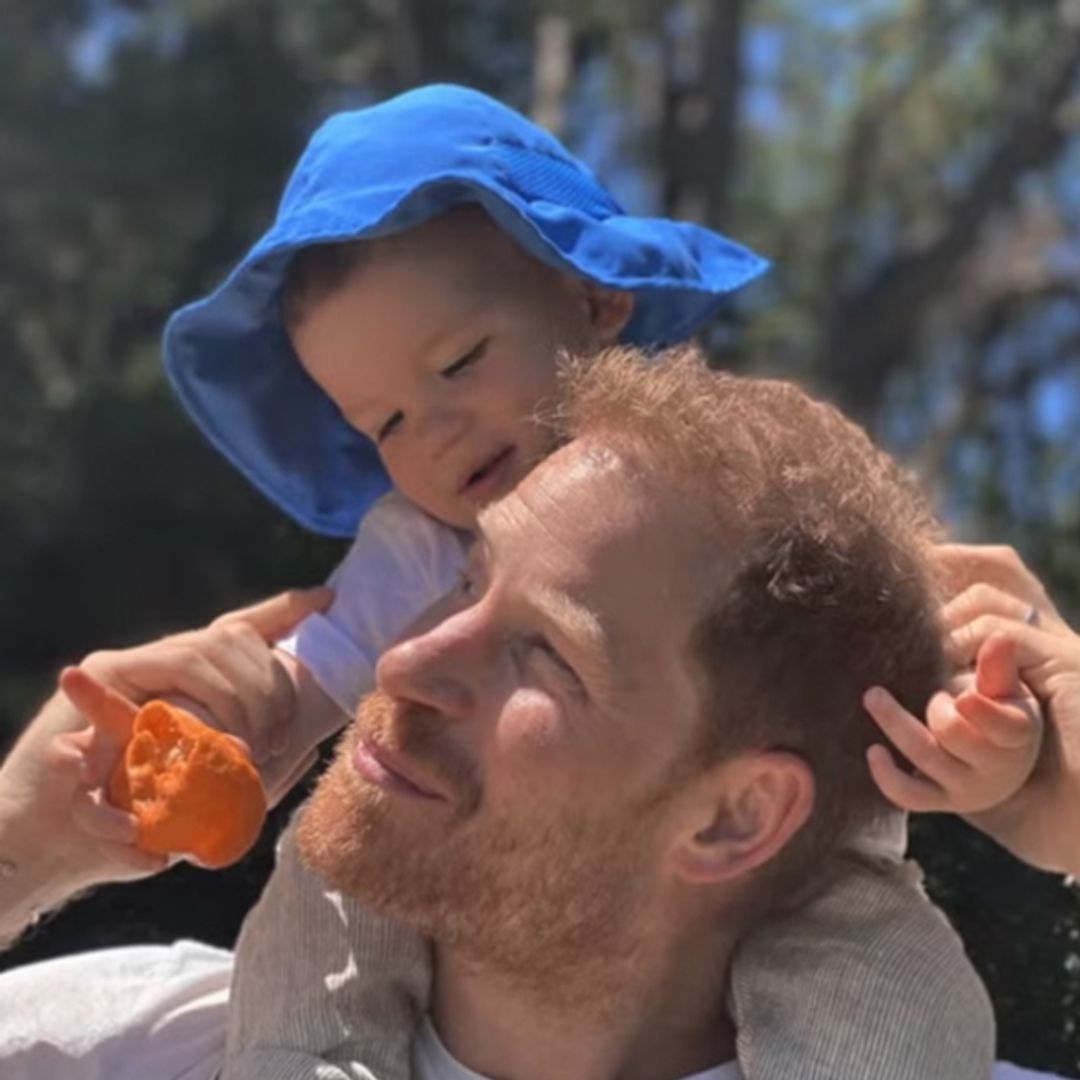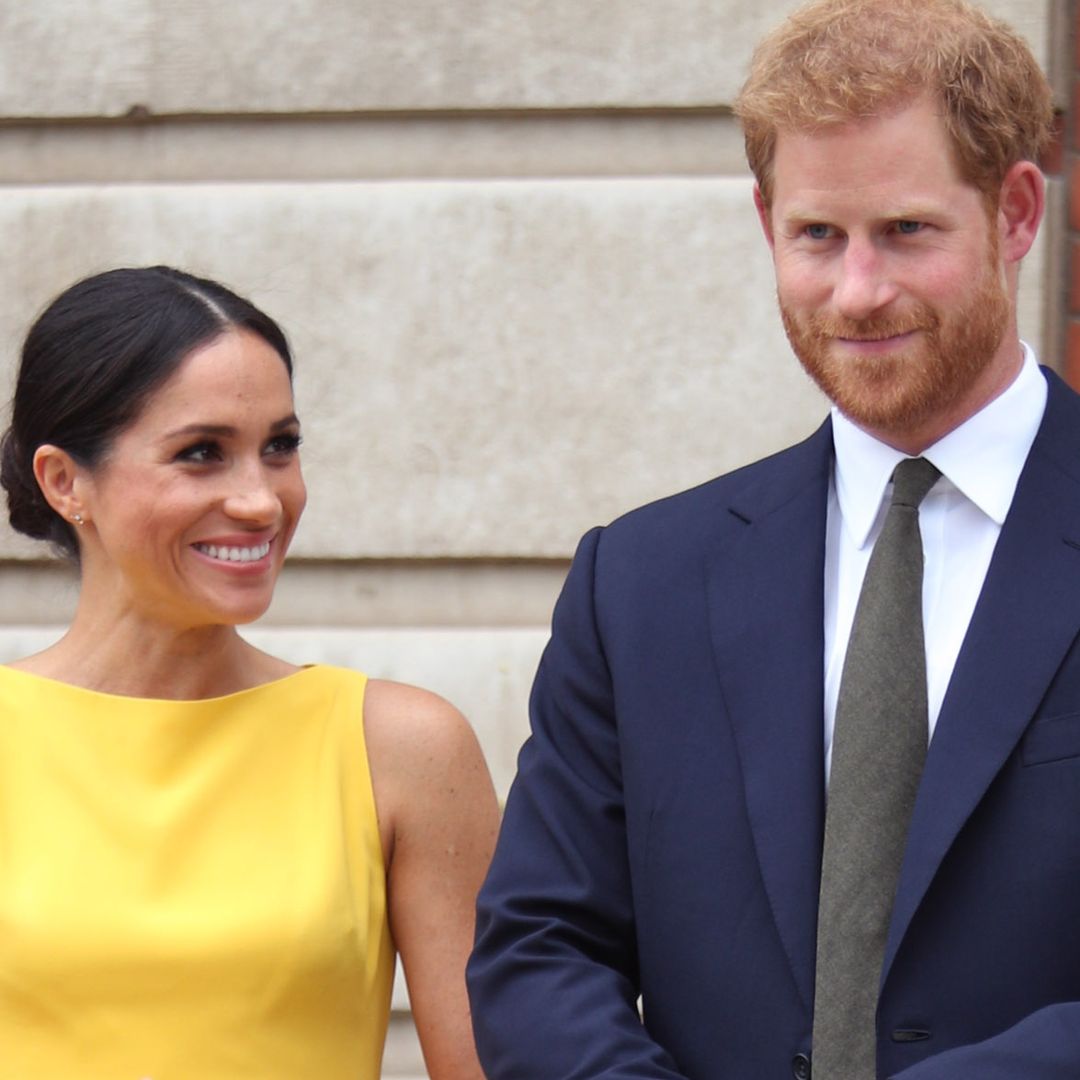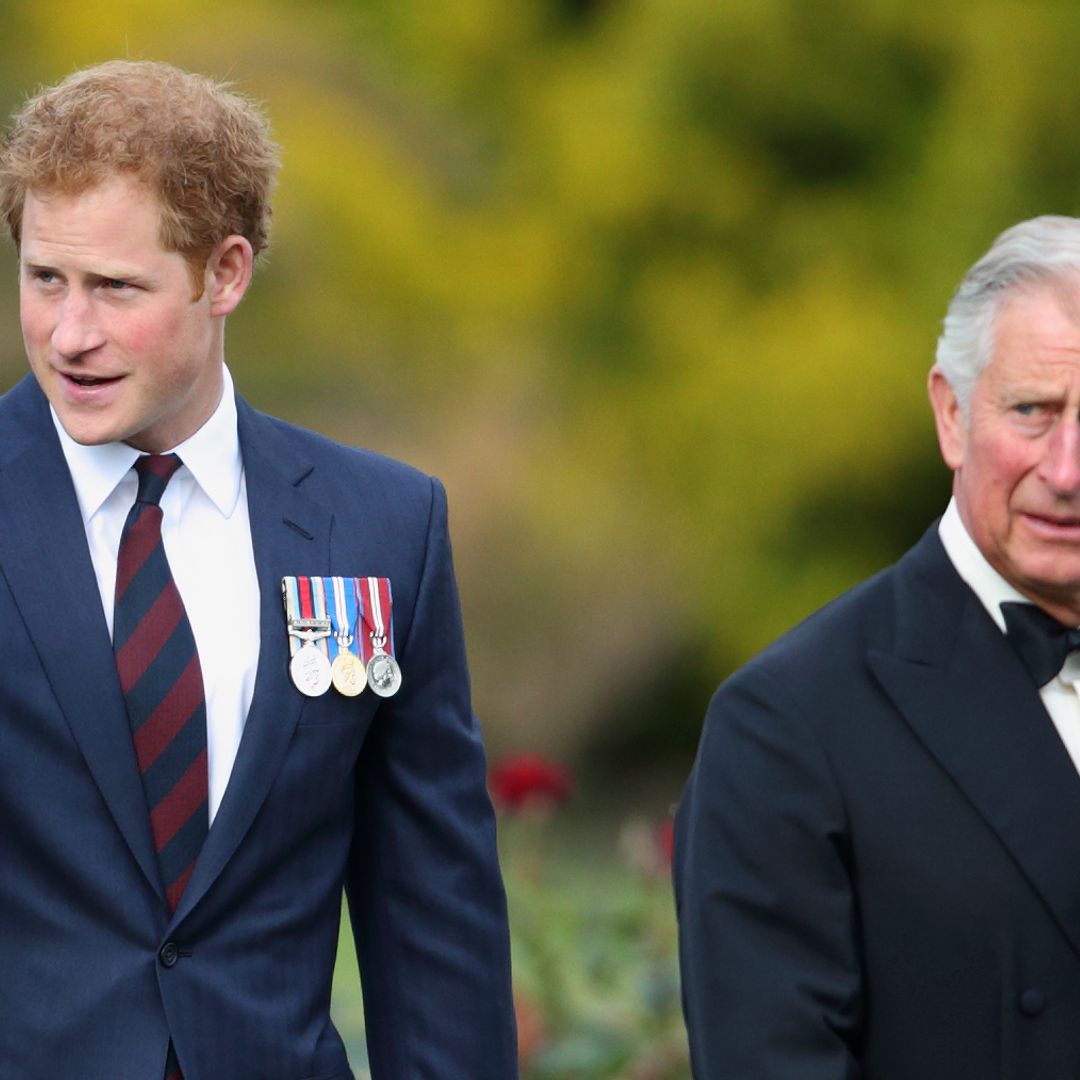The Duke of Sussex went back to his roots today as he planted a tree with the same shovel his grandmother the Queen used for the task in 1953. Harry, who wore a blue Bula shirt for the visit to Colo-I-Suva Forest Reserve, also met a woman who had served Her Majesty tea when she visited Fiji during her epic Coronation tour. Litiana Vulaca, 87, was just 21 when she was chosen for the task by her employer Frances Lilian Charlton, who was the principal of Adi Cakobau Secondary School, a girls’ boarding school visited by the monarch.
Harry was thrilled to meet Litiana Vulaca, who told him the story about his grandparents
Local clan chiefs were gathered around her as the Duke arrived, but he immediately crouched down to speak to her and had clearly been well briefed on her story. Speaking afterwards, an emotional Litiana said: "I am so happy today because he talked to me first and he knew all about my story." Describing her previous royal encounter, she said: "I was 21 years old in 1953 and I was working for a lady as a housemaid. She taught me a lot about how to do things, so when the Queen came, they chose me to serve her and the Duke (of Edinburgh).
MORE: HARRY AND MEGHAN'S ROYAL TOUR OF FIJI: ALL THE BEST PICTURES FROM DAY ONE
"I was so frightened the first time, but I was very very lucky. She was so beautiful, with beautiful skin and clothes." Litiana, who had been well trained in etiquette by her boss, also recalled an apparent breach of protocol by Prince Philip, saying: "I remember that the Duke didn’t use a teaspoon to put sugar in his tea, he picked up the sugar lump with his fingers. I was shocked."
Harry was in the forest to formally recognise its dedication to the Queen's Commmonwealth Canopy Project - and to mark the occasion he unveiled a plaque and planted an indigenous Dakua tree, which is a threatened species in Fiji. He was led to a shiny metal shovel, engraved with the words 'Her Majesty Queen Elizabeth II, Lautoka, Fiji, December 18th 1953' and picked it up, saying; "This is the second time it’s been used since 1953, right?"










